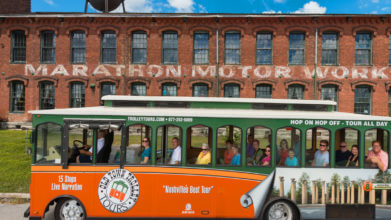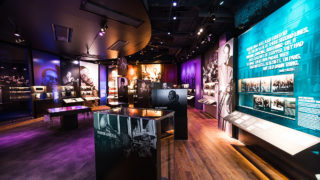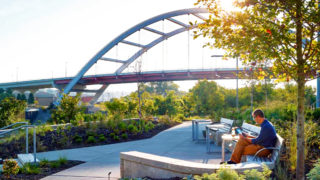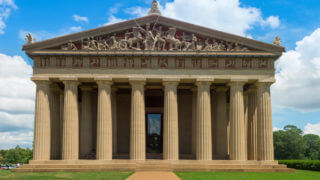Tennessee State Museum: Exploring Tennessee’s Rich History

The Tennessee State Museum offers visitors a deep dive into the state’s remarkable history, with exhibits spanning from early landscapes and indigenous peoples to modern-day Tennessee. Located on Bicentennial Mall in Downtown Nashville, this expansive 137,000-square-foot museum showcases Tennessee’s diverse past through interactive exhibits and engaging programming. With six permanent exhibits and a rotation of temporary displays, there’s always something new to discover at the Tennessee State Museum. Whether you’re a history enthusiast or looking for a fun and educational experience, the museum provides a unique opportunity to connect with the stories and events that shaped the state. Its commitment to preserving Tennessee’s rich cultural legacy makes it a must-visit destination for locals and travelers alike.
History of the Tennessee State Museum
The Tennessee State Museum Nashville has an extensive history of its own, which began in 1937. Originally, the museum started as a small portrait gallery established by local artist Charles Campbell. His collection of portraits of notable Tennesseans quickly gained popularity, sparking interest in the state’s history. Over the years, the museum’s collection grew, leading to its eventual move to the War Memorial Building. In 1981, the museum expanded again, sharing space with the Tennessee Performing Arts Center.
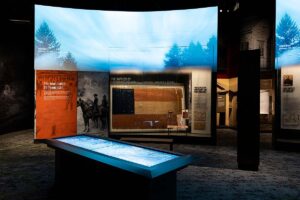
Fun Facts About the Tennessee State Museum
Andrew Jackson’s Time Capsule
One of the museum’s oldest treasures is a life-sized portrait of President Andrew Jackson from 1817. This portrait has been part of the museum’s collection since its inception and offers a fascinating glimpse into the early 19th-century depiction of one of Tennessee’s most famous figures. Visitors can learn more about Jackson’s role in shaping Tennessee and his lasting impact on American history.
Traveling Trunks of Time
Did you know that you can borrow a “Tennessee Trunk” filled with replicas and educational materials? These trunks cover topics such as civil rights, the Civil War, and the ancient Mississippians. It’s a great resource for schools and educational groups looking to bring Tennessee history to life outside of the museum. This program allows students and educators to interact with historical artifacts in a hands-on way, deepening their connection to the past.
Furniture Fashion Show
The museum once hosted a unique exhibit dedicated entirely to furniture styles throughout Tennessee’s history. From handcrafted pieces of the 1800s to more modern designs, the exhibit highlighted how furniture trends reflected the changing times in Tennessee. This creative approach helped visitors understand the everyday lives of Tennesseans across different eras.
Know Before You Go
The Tennessee State Museum is a hidden gem, offering a captivating journey through the state’s rich history and diverse culture — all for free! Whether you’re a history buff, art enthusiast or simply curious, there’s something for everyone. To make the most of your visit, consider these tips:
Planning Your Visit
Check the hours: The museum is typically closed on Mondays and major holidays. It’s always a good idea to verify the current hours of operation before your visit.
Parking: While parking is available, it can be limited, especially on weekends. Consider using public transportation, rideshare services or taxis to avoid the hassle of finding a parking spot.
Exploring the Museum
Engaging Exhibits
The museum’s exhibits are designed to be interactive and informative, catering to visitors of all ages. From hands-on displays to multimedia presentations, there’s plenty to explore and discover. Some of the permanent exhibits include:
Forging a Nation: Focusing on the period from 1760 to 1860, the exhibits showcase the struggles and triumphs of ordinary Tennesseans, both free and enslaved, who formed communities throughout the state. The gallery also features artifacts related to influential leaders like Andrew Jackson, James K. Polk, David Crockett and Sam Houston, who shaped the early United States.
Tennessee Time Tunnel: The “Tennessee Time Tunnel” is an immersive journey through time blending historical artifacts, engaging exhibits and interactive experiences. Visitors can embark on their exploration of Tennessee history through different portals within the Time Tunnel, each leading to a specific era and offering a deeper dive into the past.
Tennessee Transforms: Focusing on the period from 1945 to the present, the exhibits explore the postwar era in Tennessee, including the impact of technological advancements, the Civil Rights Movement, the rise of the music industry and the state’s modern identity.
National History: Explore the geological origins of Tennessee, its diverse ecosystems, and the fossilized remnants of ancient life. Learn about the incredible biodiversity of the Great Smoky Mountains National Park.
Change and Challenge: Focusing on the period from 1870 to 1945, this exhibit explores the significant changes in Tennessee’s history, including the struggles for civil rights and women’s suffrage. Discover how Tennesseans contributed to national efforts during World War I, the Great Depression and World War II, including the heroic deeds of Alvin C. York.
The Civil Rights and Reconstruction: Discover the tumultuous era of the Civil War and Reconstruction, when Tennessee was torn apart by conflict. Explore the stories of those who fought for the Union and the Confederacy, and witness the state’s journey toward healing and rebuilding.
First Peoples: Journey back to the Ice Age and discover the first peoples to call Tennessee home. Witness their adaptation to a changing climate and the development of rich cultures. Explore encounters with European explorers and the indigenous peoples’ valiant defense of their land.
Take Your Time
Allocate ample time to fully immerse yourself in the museum’s offerings. Each gallery provides a unique glimpse into Tennessee’s past, and you may find yourself spending hours delving into specific historical periods or cultural aspects.
Guided Tours
Consider joining a guided tour to gain deeper insights from knowledgeable museum staff. These tours often highlight specific exhibits or themes, providing additional context and historical background.
Museum Store
Don’t forget to explore the museum store for unique souvenirs, books and gifts that commemorate your visit. You’ll find a variety of items, from historical artifacts to contemporary art pieces.
By following these tips, you can ensure a memorable and enriching experience at the Tennessee State Museum.
Nearby Things To Do
If you’re visiting the Tennessee State Museum Nashville, there are several other attractions in the area that you can easily add to your itinerary. Located in Downtown Nashville, the museum is surrounded by historic landmarks and beautiful parks.
Bicentennial Capitol Mall State Park

The park’s well-manicured lawns, greenery and picturesque pathways provide the perfect setting for a leisurely stroll or picnic. Whether you’re seeking a quiet moment of reflection or a fun family outing, Bicentennial Capitol Mall State Park is an ideal destination.
Tennessee State Capitol

Nashville Farmers Market

Indulge your taste buds at one of the many food vendors, where you can savor everything from hearty southern comfort food to international cuisine. Don’t miss the opportunity to sample local specialties like hot chicken, barbecue, and biscuits and gravy. The market also hosts a variety of seasonal events, including live music, cooking demonstrations and farmers markets. Whether you’re a foodie, a history buff or simply looking for a unique shopping experience, the Nashville Farmers Market is a must-visit destination.
FAQs
What is the mission of the Tennessee State Museum?
The mission of the Tennessee State Museum is to preserve and interpret the history of Tennessee through exhibits, collections, and educational programming. The museum aims to provide visitors with a deeper understanding of the state’s rich heritage and the events that shaped its development.
Is the Tennessee State Museum free?
Yes, the Tennessee State Museum is completely free to the public! This makes it an excellent destination for families, school groups and anyone looking to explore Tennessee’s history without spending a dime.
How long should I plan to spend at the Tennessee State Museum?
You should plan to spend at least two to three hours at the Tennessee State Museum to fully experience all of its exhibits. However, if you are a history buff or want to take your time exploring the interactive elements, you could easily spend an entire day at the museum. Guided tours are also available if you want a more structured visit.

